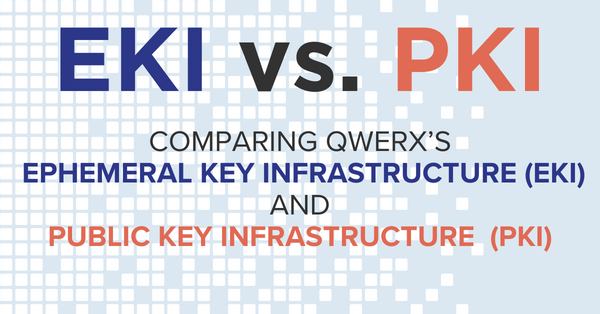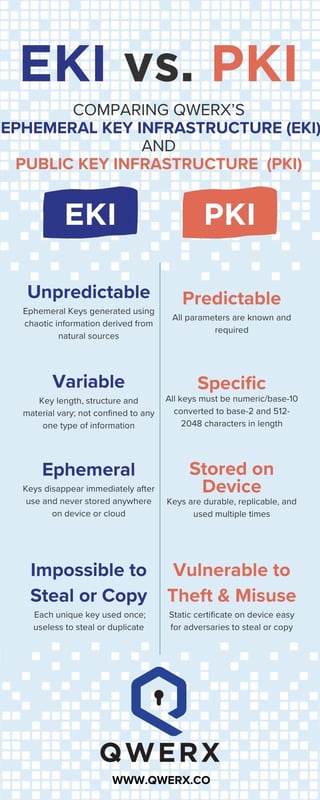100% Protection, 0% Vulnerability: Ephemeral Key Infrastructure Secures Machine Identities

It seemed like a good idea at the time. We all have heard or probably even used that phrase. Back in the mid-1970s, a couple of very smart guys set out to protect important information. They invented what we are still using today to protect virtually all digital information and every digital network. In the 1970s we didn’t have the Internet, Google, Amazon, cell phones, laptops, or data breaches. That ‘70s concept became the digital credential that today is stolen by every type of hacker to break into every possible kind of digital system.
The most recent analysis indicates that this 1970’s invention is now the pathway for 86% of all data breaches. What started out as a means of protecting digital information has morphed into the primary vulnerability for digital systems.
QWERX has addressed this vulnerability and totally eliminated it. The comparison chart below summarizes the differences between the obsolete and vulnerable existing paradigm (Public Key Infrastructure, or PKI) and its replacement: QWERX’s patented Ephemeral Key Infrastructure (EKI).

Standard Authentication and Encryption Keys
99.9% Vulnerability
0.1% Protection
Standard keys offer protection only in the moment they are being used to authenticate or encrypt, which is a tiny fraction of their existence. The rest of the time they are a vulnerability and must themselves be protected from adversaries. This is why last year 86% of all data breaches were the result of stolen credentials derived from authentication keys of one kind or another.
QWERX’s Ephemeral Key Infrastructure-based machine authentication keys provide 100% protection and 0.0% vulnerability. QWERX has eliminated the functions from key operations that create vulnerabilities. QWERX keys only exist when they are actually being used. They are never stored or exchanged. They cannot be stolen or disclosed—they are ephemeral and are used only a single time.


